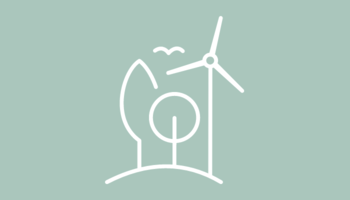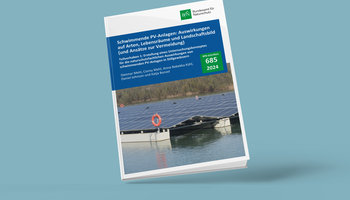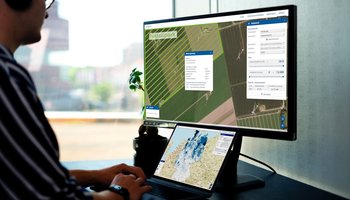Contact
Leibniz University Hannover
Institute for Environmental Planning (IUP)
Herrenhäuser Str. 2, 30419 Hannover
Prof. Dr. Michael Reich
Tel.: +49 511 762-4442
reich(at)avoid-unrequested-mailsumwelt.uni-hannover.de
Open areas to the right and left of roads and transport routes are being increasingly used as sites for solar parks in Germany. This project aims to research the extent to which they can still function as natural environments and habitats in order to connect existing habitats to each other. The possible barrier effect and other potential conflicts will be studied in order to help to plan future solar parks in harmony with nature conservation.
The aim of the project is to study the opportunities and conflict potential of various existing ground-mounted photovoltaic systems along regional transport routes in terms of habitat connectivity. Are ground-mounted photovoltaic systems (GM-PV) suitable as habitats? What significance do they have in terms of the permeability of the countryside for various primarily terrestrial species and animal habitat types? A planning aid for this has been developed in five work packages
First the current development status of ground-mounted GM-PV systems is quantified and mapped using a GIS analysis. This method allows e.g. previous losses of nature conservation areas and regional concentration spots to be balanced out.
In the next step, the study describes the current types of PV systems and identifies the relevant determining factors and areas as well as their potential positive and negative effects for reconnecting habitats along roads.
The indicator-supported field studies carried out in the third step demonstrate the connection potential or spatial barrier of selected GM-PV systems. This permits a survey of the site-related determining factors such as e.g. enclosure fencing, use, vegetation structure of the areas or coverage of the ground by solar modules and, where possible, a quantitative or qualitative description.
The results of this analysis are then evaluated in the fourth work package on the basis of various types of animal ecology habitat types (mobility, space requirement, habitat linkage).
In the fifth and final work package, specific recommendations for action will be derived from the results obtained. These are intended to be of practical use as planning aids e.g. for site planning.
Using aerial photographs, ground-mounted photovoltaic systems along motorways and railways were surveyed over the whole of Germany and classified in terms of their location. Overlaps with protected areas and habitat networks for woodlands, large mammals and both dry and wet open habitats were analysed and potential consequences derived in relation to biotope connectivity.
A total of 455 PV systems were recorded. The average area of the GM-PV system was 6.58 ha. 45% of sites were in Bavaria where there were particularly small systems of approx. 5 ha. In Brandenburg, on the other hand, a few large plants were recorded with an average size of 17 ha. 251 systems (55%) had a minimum distance of less than 50 m to the road or rail route. FFH sites were recorded in the surroundings (1000 m radius) of 152 PV systems, bird protection areas (SPA) at 86 PV sites and nature reserves at 57 PV sites. In addition, the majority of installations (93%) had spatial connections with functionally important areas of the habitat network (areas for biotope connectivity FBV, undissected functional areas UFR, ecological network axes). The majority of overlaps occurred with wet habitats (362 installations). In the German Central Uplands a large number of GM-PV systems had areas of the forest habitat network and habitat network for large mammals in their surroundings. Around 40% of GM-PV systems were in areas of habitat networks of dry open-land sites.
The potential impacts of GM-PV systems on biotope connectivity must be evaluated in connection with specific sites and in relation to the ecological habitat type. Conflicts can arise through barrier effects (fences) or competition for land. On the other hand GM-PV systems, being relatively extensively used areas, could make a positive contribution as connective structures for species of open habitats.
Leibniz University Hannover
Institute for Environmental Planning (IUP)
Herrenhäuser Str. 2, 30419 Hannover
Prof. Dr. Michael Reich
Tel.: +49 511 762-4442
reich(at)umwelt.uni-hannover.de
Federal Agency for Nature Conservation (BfN)
FG II 4.2 Impact regulation, traffic route planning
Alte Messe 6, 04103 Leipzig
Marita Böttcher
Tel.: +49 341 30977 141
Marita.Böttcher@bfn.de
03.04.2024
Weiter

03.04.2024
Weiter

15.02.2023
Weiter
